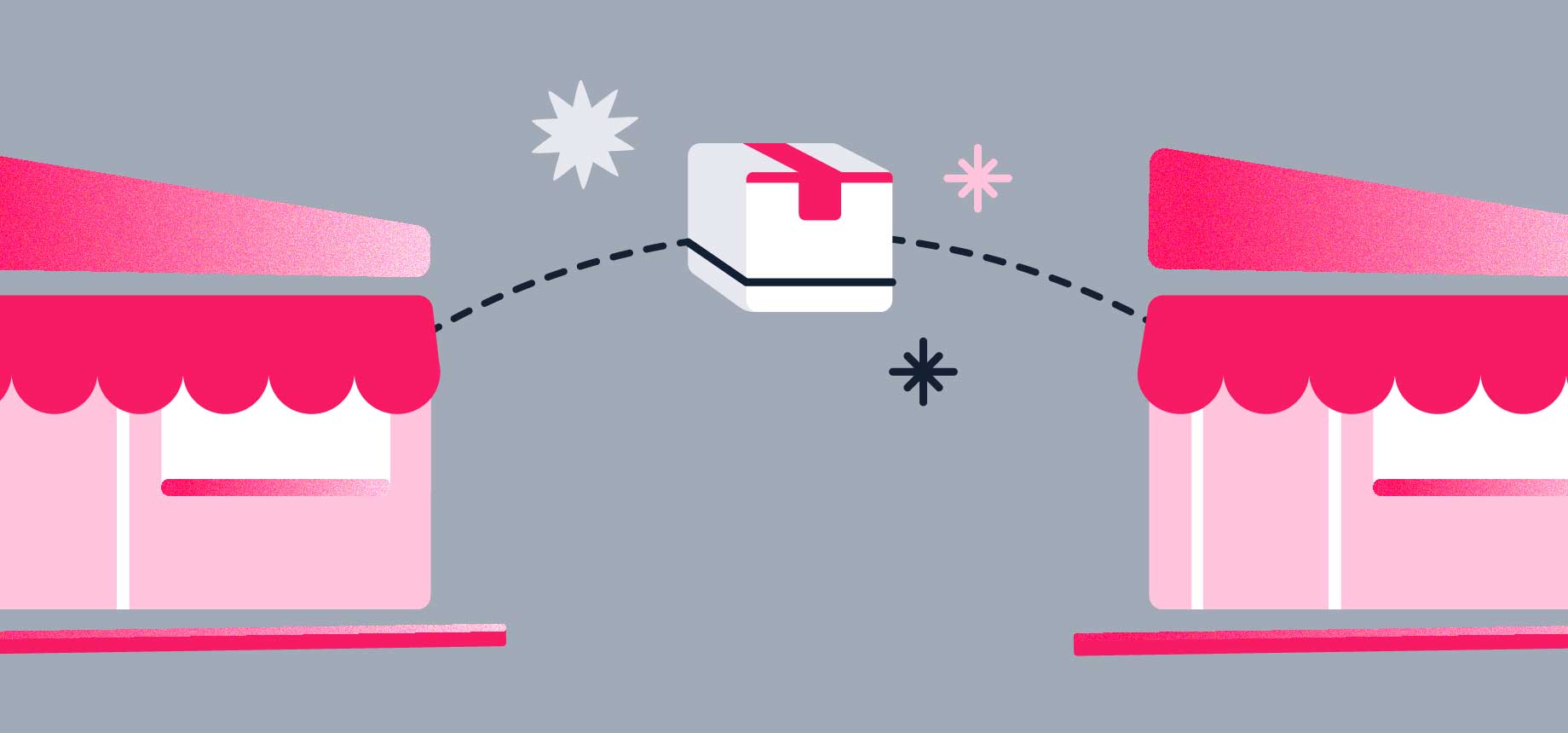
During the last few years, the world of retail has been experiencing tremendous and irreversible changes due to the onslaught of digital. Unsurprisingly, like in any transition period, numerous challenges have arisen, to which quick, efficient and ingenious solutions were needed. In response, retailers have created internal business units to deliver that sought-after innovation, thereby accelerating their compatibility with a digitally-driven world. The resulting rise of retail innovation labs, resting heavily on headless technology, is a veritable phenomenon.
The versatility and benefits of retail innovation labs
The agenda of an innovation lab is full and diverse. On the one hand, the units are designing technological solutions to ever-lasting debates about how to effectively mix brick-and-mortar operations with online ones, how to keep up with the fast pace of consumer behaviour, and how to maintain an edge against competitors, just to name a few. On the other hand, they are leading the change from within, for the cultural aspect of digitalisation is a lengthy and demanding affair. Despite the many duties, plenty of VTEX clients can attest having an innovation lab is worth their while.
Take Cobasi, for instance. Cobasi are a Brazilian chain of pet shops, with a history spanning 35 years and a brand presence benefitting from over 100 physical stores. The company started a profound digitalisation in 2018, when new management with ecommerce experience came on board. Front and center throughout the process have been the Cobasi Labs, operating akin to an internal start-up which gets bigger and bolder as time passes by. Thanks to their fast adaptability, Cobasi have been among the first to implement curbside pickup in Brazil during the coronavirus pandemic.
Similarly, Grupo Soma, a Brazilian fashion conglomerate encompassing nine brands and over 200 physical stores, started a massive digital transformation once it was clear technology could optimize processes and flows in all business areas. With the help of Soma Labs, consisting of over 100 highly talented designers and developers, Grupo Soma now draws 60% of revenue from digital commerce, a stellar achievement compared to the market’s average of approximately 5%. It comes as no surprise, then, that Grupo Soma have recently been named among the Top 5 Most Innovative Retail Companies in Brazil.
But the benefits of retail innovation labs stretch beyond fancy titles and short-term fixes. With unparalleled expertise about internal operations, these teams can channel their energy into what really matters: protecting and upgrading the brand.
Headless technology, retail innovation labs’ best friend
Innovation can be accomplished through more than one avenue. One can build something new from scratch, but one can also creatively combine already existing ideas, practices and products to deliver an entirely novel result. Retail innovation labs do both, but most often than not they build on top of what their technological partners have put at their disposal. And what better way to do that if not with headless technology?
Headless technology has become the buzzword of the commerce world. It decouples the front-end from the back-end, allowing APIs to intermediate the communication between them. This comes in handy for retailers wishing to effectively tackle today’s explosion of customer channels (IoT, SMS, social media, voice commerce, etc.), for it allows each front-end to be optimized according to the specific channel properties while pulling information from a single back-end. In short, it offers flexibility and autonomy, greatly appealing to vendors and retail innovation labs alike. VTEX, with its API-first microservices-based cloud infrastructure, can provide it to its customers.
In 2019, Cobasi started working on devising their own desktop checkout using headless technology. Cobasi sought more flexibility, because by gaining more control in terms of customizations, they could serve their customers better, implicitly bringing superior performance and greater revenue. Cobasi could also test and improve new features continuously, which was difficult within the framework of a native checkout that was envisioned to fit the general needs of numerous and different merchants. Hence, a Cobasi-specific checkout, built on top of the VTEX platform and simply calling VTEX APIs, would solve a myriad of issues.
Indeed, their efforts were highly rewarded by shorter loading time, better UX and, most importantly, a conversion rate increase of over 20%. Additionally, the success of the pioneering project and the experience gained throughout its implementation enabled other ideas to take shape. Cobasi re-designed their PWA pages using headless technology and they plan on doing the same to their desktop pages in 2021. Moreover, after a third-party partnership unexpectedly phased out in the middle of the pandemic, they were able to swiftly migrate their app to their jurisdiction in just one month. VTEX’s API-first architecture enabled all these achievements.
“It would not have been possible to build what we built without VTEX’s APIs and platform. There’s no one better than you for Cobasi.”
Felipe Tamburus, Head of Cobasi Labs
On their end, Grupo Soma have launched B2C apps using VTEX headless technology for two of their brands, Animale and Off-Premium, with another brand to soon follow suit. As yet another customer touchpoint, an app is greatly welcomed. But Grupo Soma believe apps are even more special, as you can have the brand’s look & feel inside them, which strengthens the direct relationship with the customer and drives brand loyalty. For customer-centric enterprises like Grupo Soma, they are a must-have.
“It’s a lot of effort to develop and maintain apps – but it’s impossible not to have them. Thankfully, we can set them up really fast thanks to VTEX’s microservice-based architecture.”
Alisson Calgaroto, Grupo Soma Director of Technology and Innovation
A more recent headless endeavour is Soma Labs’ implementation of live-streaming sessions after the lockdown disrupted the brand’s essential relationships between sales attendants and customers. In a live-streaming session, a representative presents items to the audience and Add to Cart buttons pop up. These are directly linked to the information in the back-end through APIs like Catalog and Orders. As such, customers can simply add all their desired products and proceed to the checkout – without ever leaving the streaming. The new sales channel enhances an often cold and alienating online shopping experience, as it is more entertaining and socially interactive than simply browsing on websites. Thus, not only the initiative follows Grupo Soma’s ethos of enriching connections in a world in which those are currently put on stand-by, but it also delivers amazing results: over 2000 orders in just an hour of live-streaming. Pretty neat!
A sustainable mindset
Despite the evident wonders of headless technology, a word of caution must now be addressed. With the accessibility of headless, brands might be tempted to reach for the stars and do (or re-do) everything. But they would be venturing onto a slippery slope, because taking on too much internally can severely impact business growth. A single internal project can already be incredibly difficult and costly to develop and maintain, so having several such projects in progress requires a serious cost-benefit analysis. What is more, focusing on larger-than-life goals means that the innovation that usually boosts the brand would be forgotten, postponed or always overshadowed. In the long-run, the brand would lose enormously.
Thus, for sustainable business growth, retailers should focus on the details that refine the brand’s competitive advantages and that bring something extra to the table. Experienced companies like Cobasi believe this philosophy is ideal for optimizing resources and achieving smart and continuous improvements.
“We understand that we have some solutions that are commodities and some solutions that make us different from our competitors. So we will buy the commodities (i.e. the ecommerce platform), but build in-house the things that make us different. We’re trying to get the best of both worlds.”
Felipe Tamburus, Head of Cobasi Labs
In the same vein, Grupo Soma highlights that this approach also maximises one of retail innovation labs’ strongest suits: first-hand knowledge about the brand’s DNA, vision and needs, imperative for tactful initiatives.
“A lot of companies have their own commerce platforms, but why? It doesn’t bring added value to the brand. But a live-streaming tool or an app does. So we outsource the main solutions and we create in-house only what is core to the brand, the differentials. We can do that because no one knows our brand better than we do.”
Alisson Calgaroto, Grupo Soma Director of Technology and Innovation
Bottomline, understanding what internal initiatives should actually rely on headless technology is key to avoiding what VTEX has coined as “headless fatigue” – a stage in which retailers realise that taking too much on their plates equates to astronomical costs and slow-paced evolution, therefore defeating the original purpose.
So don’t be Icarus flying too close to the sun. Instead, think strategically, protect your retail innovation labs if you have them, and pursue sustained innovation.












